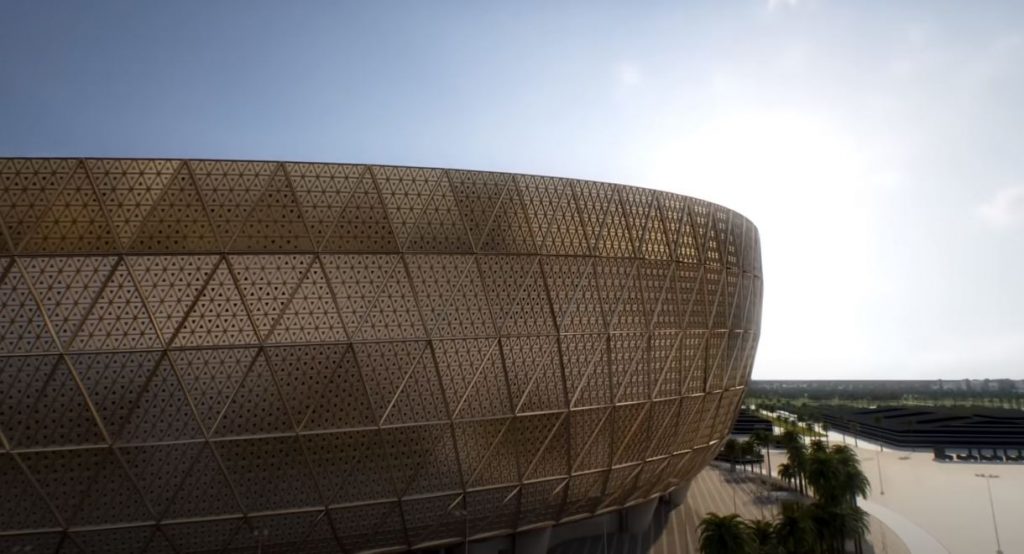Building The World Cup 2022 Stadiums
2022’s Qatar World Cup is unique in a lot of ways. It’s the first time the tournament will have been held in a Middle Eastern country, and the first to take place outside of the summer months, meaning that league competitions in many countries – including England’s Premier League – have had to be suspended mid-season.

Qatar is not known as a hotbed of football, and until the tournament was awarded in 2010 the country entirely lacked the necessary infrastructure to support one of the world’s biggest sporting events. What that has meant is that of the eight stadiums that will host the matches, seven are brand new and the other has been substantially upgraded for the event.
Regardless of the controversy surrounding the award of the tournament in the first place, not to mention the reported human cost of building the stadiums, it’s hard to be anything other than impressed by the results.
Although we’re focusing on the construction of the stadiums, it’s worth noting that Qatar has also built a new airport, a new metro system, lots of new roads, some 100 hotels – and an entire city to go with the main stadium.
As construction projects go, it’s been a biggie!
The stadiums
All eight stadiums are within 21 miles of Doha, Qatar’s capital city, and are linked by a metro and tram system. That means that supporters will relatively easily be able to watch more than one game in a single day.
Some of the designs and methods of construction are unusual to say the least, with most of the stadiums also boasting retractable roofs and solar-powered cooling systems to help ease the effects of temperatures that could reach well over 30ºC.
The Lusail Iconic Stadium has a capacity of 80,000, will be the centrepiece of the tournament and will host the final on the 18th December. It was only completed this year and after the tournament it will be dismantled again as the local team has no need of such a large ground.
Of the others, Stadium 974 was constructed out of 974 shipping containers and located on an artificial promontory, Al Janoub Stadium has a design inspired by local pearl fishing boats with a stunning roof that reflects those boats’ white sails, Al Bayt Stadium’s design was inspired by traditional Arab tents and Al Thumama Stadium will feature structures in the shape of sand dunes.
- The World Cup stadiums: www.qatar2022.qa
The workers
Qatar brought in some 30,000 workers from other countries – principally India, Nepal, Bangladesh and the Philippines, but also from some African countries such as Ghana – just to build the stadiums.
- The Workers Cup Movie in Full: www.kanopy.com
However, this is by no means an unusual way of getting things done in Qatar. In fact, it’s estimated that two-thirds of the country’s population is made up of the two million foreign workers employed there.
The timescale
Qatar was awarded the World Cup in 2010. Naturally, it took a while to get all the practicalities in place to start work on the new stadiums, and construction eventually started in November 2015. The last stadium to be completed – the Lusail Iconic – was inaugurated in August 2022, just three months before the start of the tournament.
As a comparison, when England needed to build just the one new stadium (Wembley), it took four years from start to completion. Work started in 2003, the year it was originally planned to open.
The cost
The exact cost of the new stadiums is hard to establish, with separate estimates coming from the Communications Executive Director for Qatar’s Supreme Committee for Delivery & Legacy of the World Cup, who gave a figure of $6.5 billion, and the same committee’s Secretary General, who suggested a figure of $8-$10 billion. (Again, as a comparison, the new Wembley cost about $1.57 billion, although unlike most of the Qatari stadiums, it was never going to be dismantled again just a handful of years after construction.)
That total is considerably more than the $4 billion specified in the original bid (which was supposed to have been enough for 12 stadiums), but is dwarfed by the cost of all that other construction work we mentioned earlier, which could be anywhere between $200-$220 billion.
Whatever construction project you’ve got on – whether it’s an extension, a new garden shed, a driveway or an 80,000-seater sports stadium – Neil Sullivan & Sons can help with the best concrete services in and around Essex.
Our range of building and landscaping supplies, plus useful extras like grab hire and concrete pumps to make your work run even more smoothly, has been helping local builders and homeowners with their construction projects for years.
You can place your orders for ready-mix concrete, aggregates and other essentials online now, or give us a call, or contact us for more information and advice.